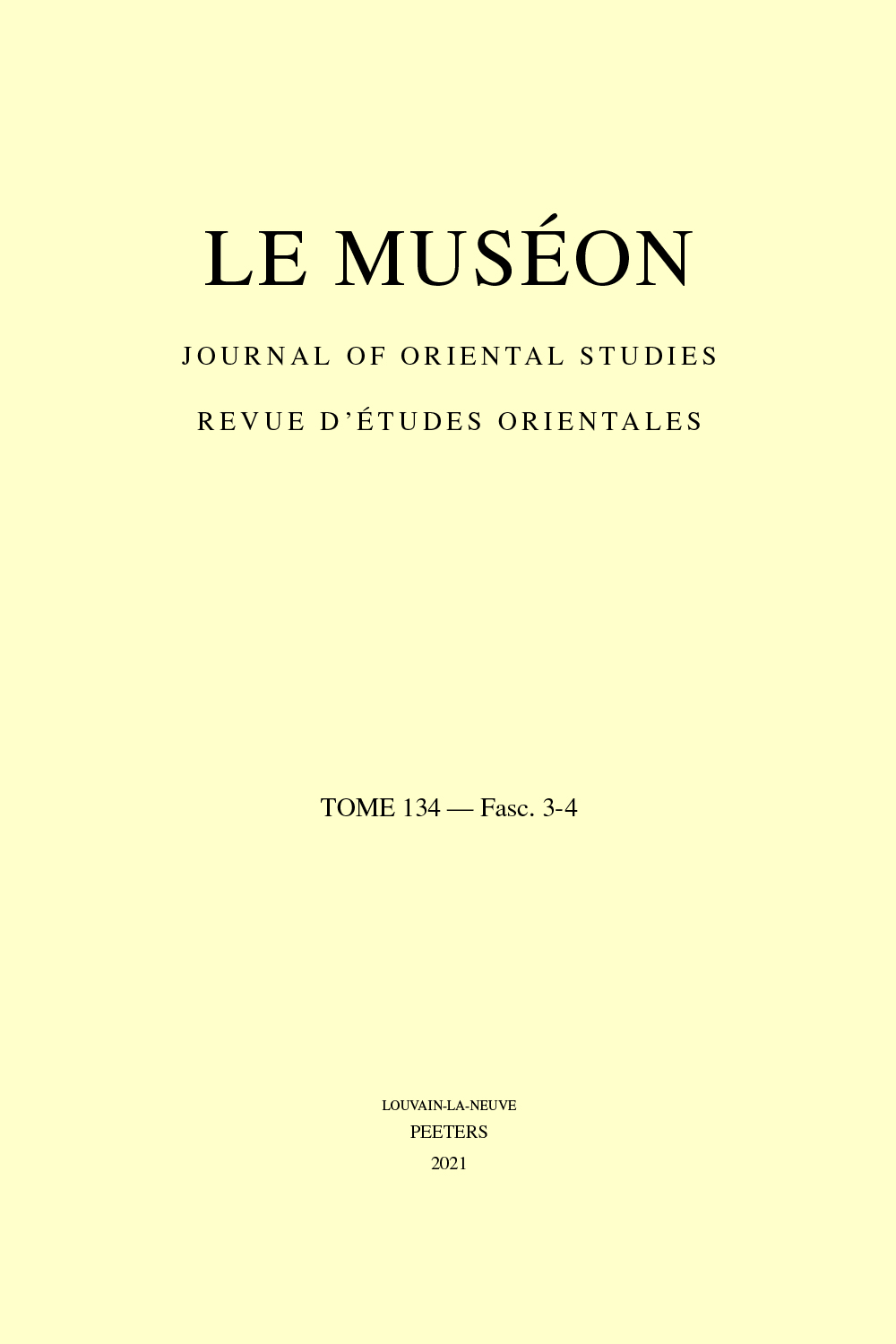 previous article in this issue previous article in this issue | next article in this issue  |

Preview first page |
Document Details : Title: The Fires of Naxčawan Subtitle: In Search of Intercultural Transmission in Arabic, Armenian, Greek, and Syriac Author(s): VACCA, Alison Journal: Le Muséon Volume: 129 Issue: 3-4 Date: 2016 Pages: 323-362 DOI: 10.2143/MUS.129.3.3180783 Abstract : This article questions the independence, coherence, and reliability of Near Eastern sources by focusing on the various Muslim and Christian accounts of a single event. Around the turn of the eighth century, Arab forces under Muḥammad b. Marwān defeated an Armenian-led Byzantine army in the Umayyad North. In retribution for their rebellion, Muḥammad subsequently tricked the Armenian nobility into gathering into churches in southern Armenia, then he locked the doors and ordered his men to burn the captives alive. Sources from the eighth to the thirteenth centuries record the fires in Arabic, Armenian, Greek, and Syriac. The first goals of this article are to examine each extant report and to record the discrepancies between the different versions. From there, the article delves into more detail about two accounts, the first in Łewond’s eighth-century Armenian Patmabanut‘iwn and the second in Khalīfa b. Khayyāṭ’s ninth-century Arabic Ta'rīkh. This speculates about why the stories concerning the fires were so compelling across linguistic, religious, and cultural divides and why the accounts differed one from the next. This article concludes that questions of reliability are tied to authorial intention, as the details in any given account may not reflect 'what really happened' so much as why the author cared about the event. Finally, this article also concludes that, with the exception of the traditions related to Theophilus, there is no evidence of intercultural transmission of accounts of the fires until the thirteenth century. |
|


